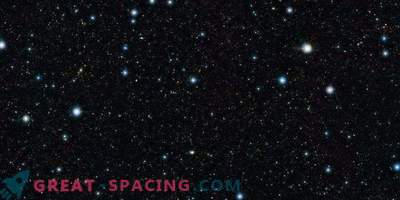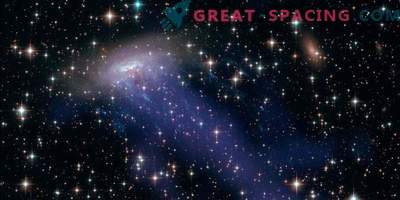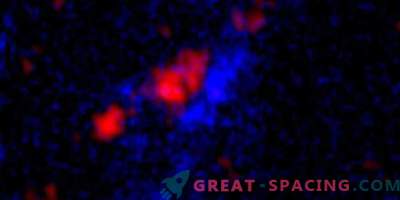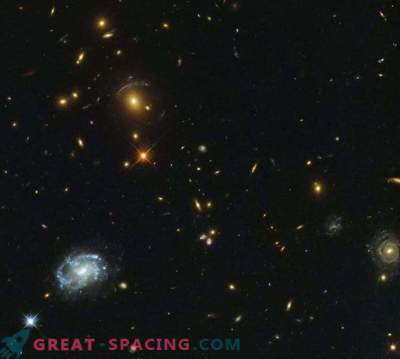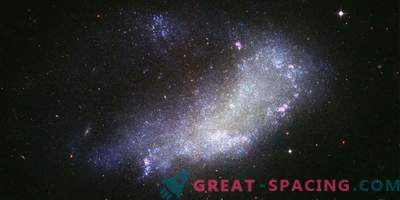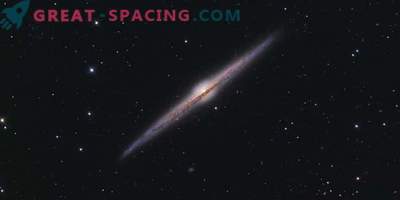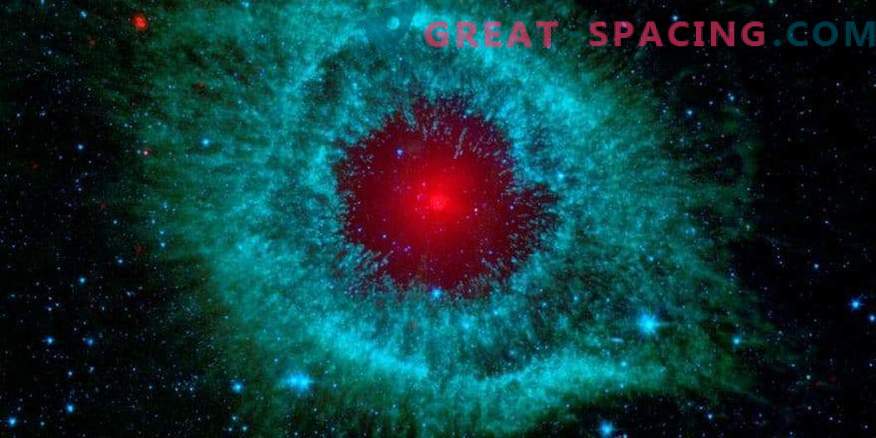
Scientists used 3 powerful terrestrial and orbiting telescopes to trace a galaxy 11 billion light-years away. They managed to find an explosive stellar formation in the nucleus, hinting that galaxies are able to change their shape without contact with other galaxies.

The ALMA submillimeter waves found (left) indicate the position of dense dust and gas in which stars form. Optical and IR light, tracked by the Hubble telescope, shown in the center and to the right
Previously it was believed that massive elliptic types appear when a disk collides. But maybe there is another scenario. The researchers focused on the galactic formation, which appeared 3 billion years after the Big Bang event.
Finding such a faint glow is hard work. Therefore, we chose 25 galaxies from observations of the 8-meter Cosmau telescope, Hubble and ALMA. By capturing light and submillimeter waves, we were able to track the shape of the galaxy 11 billion years ago and follow its development.

Active star formation in the dusty and gas pocket of the galactic center
High resolution allowed us to trace the galactic metamorphosis. It turned out to find a site with an active star formation. And it happens so intensely that a huge star population appears in the center. It is believed that in the end it will lead to transformation into an elliptical or lenticular type.
This proves that a galactic collision does not have to happen to change shape.

Initially, the disk component dominates in the galaxy (left), but the active stellar formation takes control (center)
About a century ago, Edwin Hubble created a morphological classification of galaxies. Modern telescopes can get closer to solving the latest mysteries.
